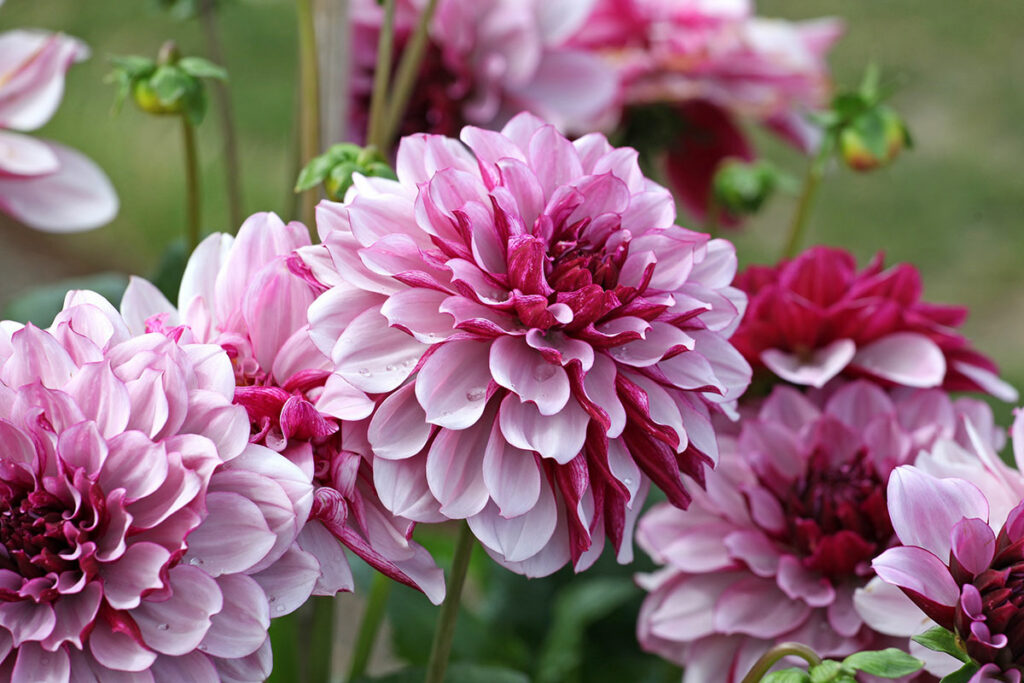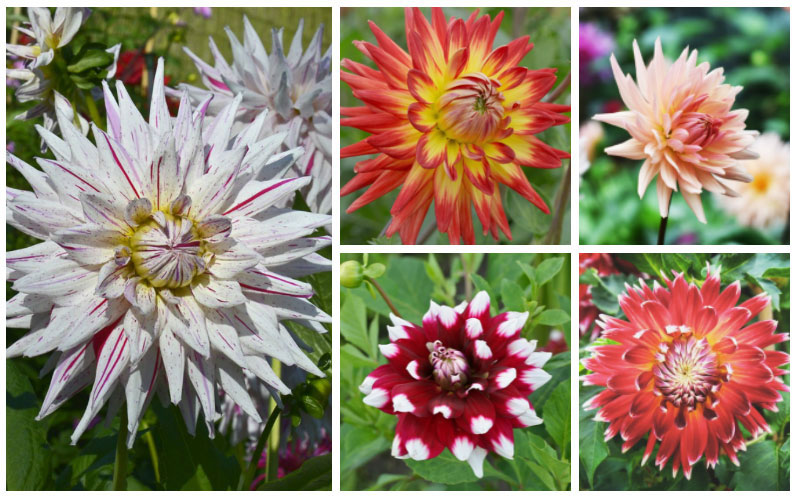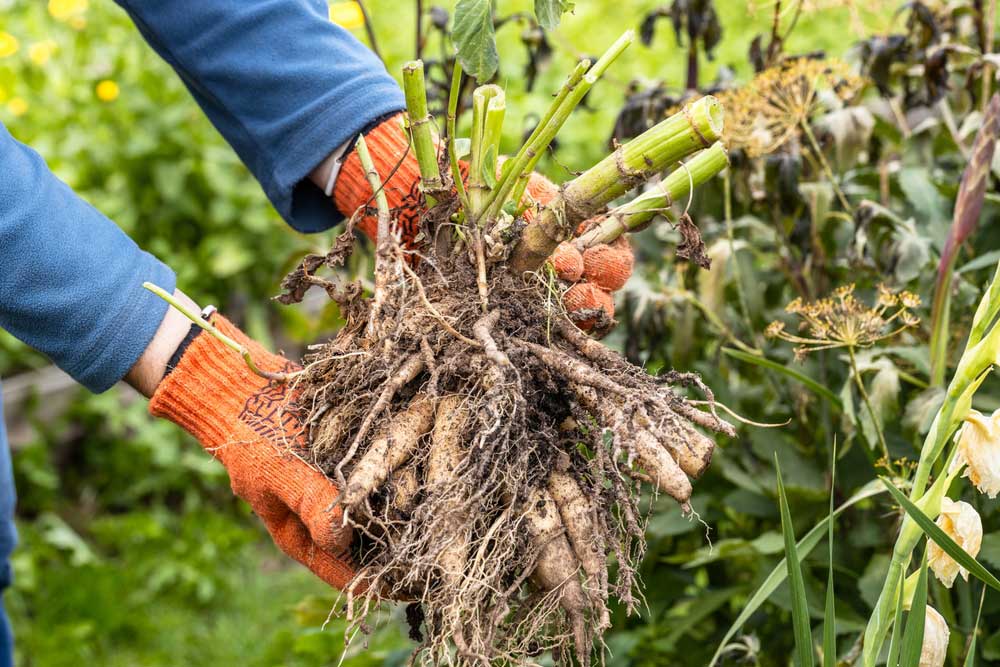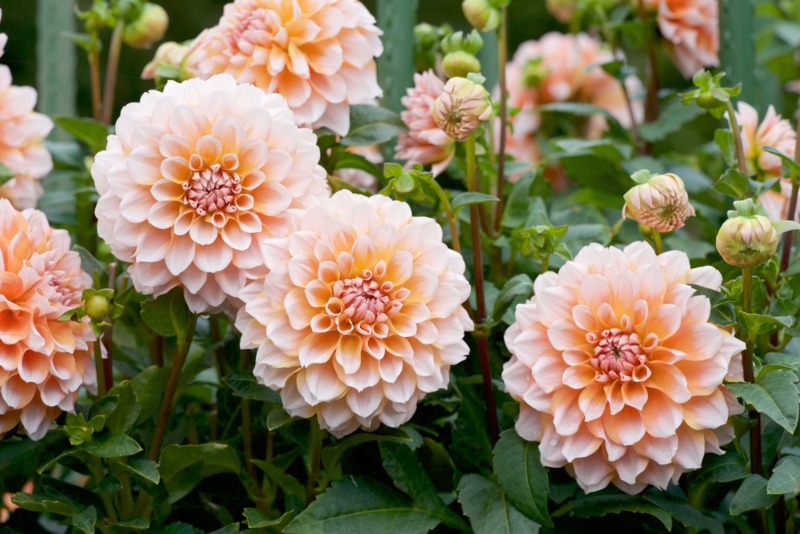
One of the challenges of growing dahlias is the wide variety of choices available. In fact, you might feel like a child in a candy store as you try to decide if cactus, semi-cactus, decorative, pom-pom, ball, anemone, collarette, mignon, orchid or peony dahlias are the right choice for you.
Then comes the even harder choice of deciding which color is right for you because of the vast number of options available in these flowers that can be grown almost anywhere, except Florida and Deep South Texas, in the United States.
Before you start, learning how to care for dahlias will let you grow ones that will impress your friends.
Light and Temperature Requirements
While it is tempting to stick your dahlias in the ground as early as possible so that you can get early blooms, you need to wait until the ground’s temperature is at least 60 degrees before beginning. These are sun-loving plants that prefer up to six hours of sun daily. They especially love the morning sun. After the summer is over, if you live in a colder climate, you need to remove these tuberous plants from the ground or treat them like an annual and start fresh each year.
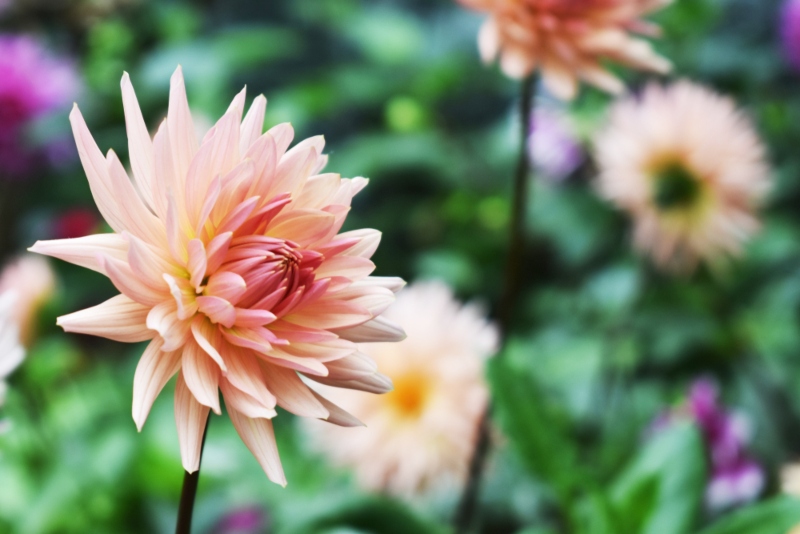
Planting Location Tips
You have many different places that you can plant dahlias. Plant all varieties in well-drained soil. If you have heavier clay soil, consider mixing in some aged manure or some coarse sand to help it drain better. You may want to run a soil test before planting as the pH level should be between 6.5 and 7.0.
Plant dahlias that grow taller and bigger in areas where they do not have to compete with other plants for available nutrients. Smaller varieties can be used in mixed flowerbeds or as a border to a vegetable garden. Asters, coneflowers, and globe thistles are some you may want to consider growing alongside your always hungry dahlias.
Watering
Do not water the ground until you see your dahlias growing because overwatering can cause the tubers to rot. Then, use a sprinkler to give them a soaking at least three times a week, unless you get plentiful rainfall. If you live in a warmer climate on the hottest days of the summer, you may need to water them every day.
Soil
The pH balance of your soil must be between 6.5 and 7.0. If you need to lower your soil’s pH, consider mixing some sphagnum peat into the soil before planting your dahlias. If you need to raise the pH, consider mixing in some limestone. Modifying a soil’s pH level is usually a slow process, and you may need to treat an area several times.
Fertilizer
You should use a low-nitrogen fertilizer on your dahlias. If you already have fertilizer for your vegetables, the chances are that you can use the same one on your dahlias because it is probably 5-10-10 or 10-20-20. You should fertilize when you first notice them poking through the ground. Then, starting mid-summer, you should feed them every month until shortly before the first frost is expected.
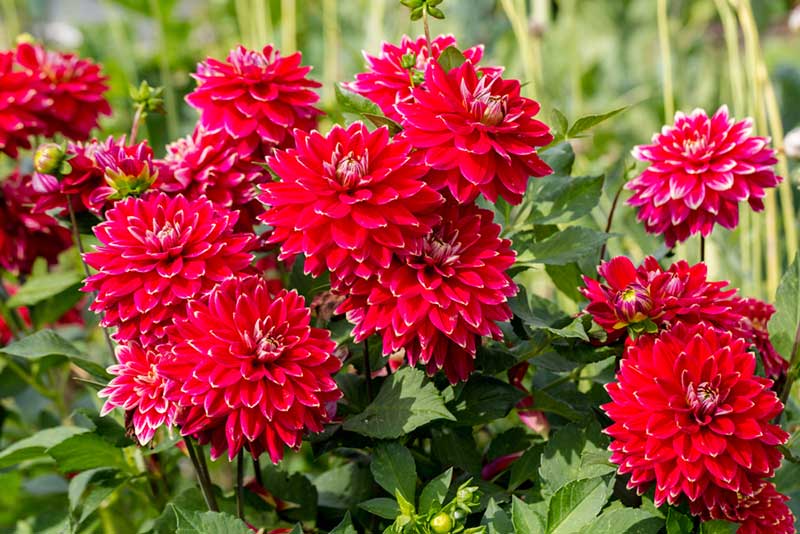
Growing Dahlias as Houseplants
A colorful dahlia may be the perfect addition to brighten up a dull room. If you want to grow dahlias as houseplants, then plant a tuber about .05 inches deep in soil that will drain well. Either use premoistened soil or moisten the soil a little.
Cover the pot with a piece of glass and put it in a sunny location where the temperatures will stay between 70 and 75 degrees until the plant has sprouted.
Then, remove the glass. When the plant is about 4-inches tall, pinch off the bud at the end of the stem right above the second leaf. Pinching the plant off will cause the plant to become bushier, and it will stand up better.
As your plant grows, you will need to stake it to give it added support. Fertilize your dahlia monthly with a low-nitrogen fertilizer.
Dahlias are beautiful plants that you can easily grow inside or out. They require very little care as long as the soil stays moist, and you fertilize on a monthly basis. Be careful, however, because growing dahlias can become addictive with a large number of choices available. 🙂





